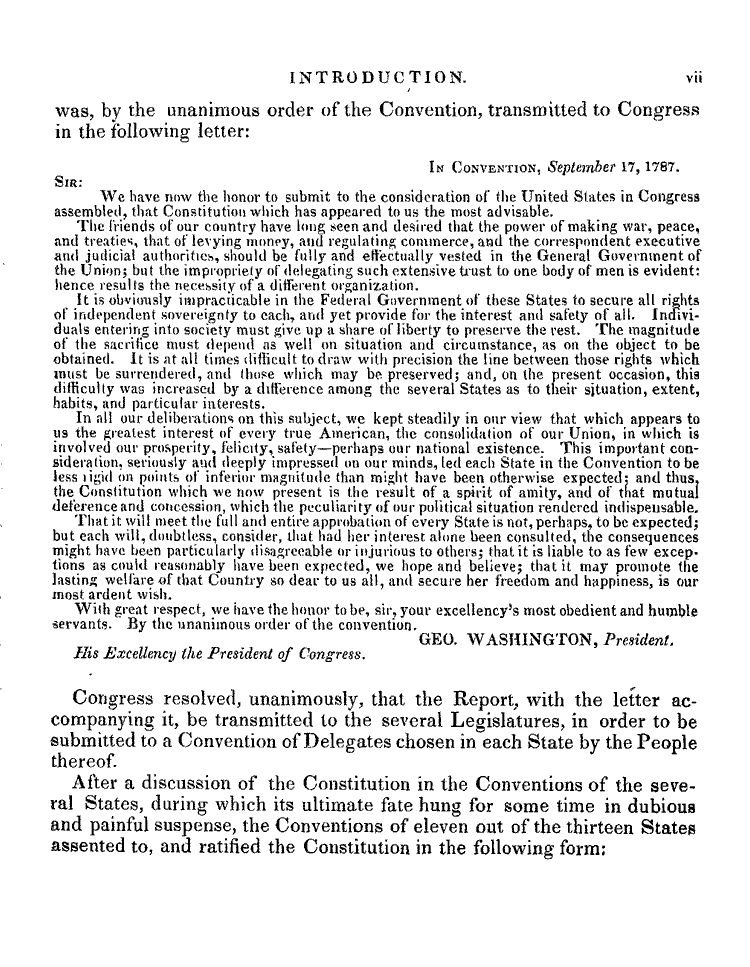What do a guy who tried to incite an Indian war, a guy who died in a duel, and a guy who, reversing the normal course of things, retired to New York City have in common?
William Blount, Richard Dobbs Spaight, and Hugh Williamson were the North Carolina signatories to the US Constitution on September 17, 1787. While not as famous as a Hamilton or a Madison or a Washington, you dance with who brought you. And these were the Tar Heels who brought us from the dysfunction of the Articles of Confederation to the enduring system we have today.
Blount served in the Revolutionary War fighting in battles both in Pennsylvania and the South. After the war, he became active in North Carolina politics and was named a delegate to the Constitutional Convention. He also had the distinction of being the first US Senator expelled from his position. Blount County, Tennessee is named after him.
In 1790, George Washington appointed him to be Governor of the Territory South of the Ohio River. Having concluded the Treaty of Holston, Blount declared that the capital of territory would be moved to Knoxville. In Knoxville, Blount built a mansion in 1792, which was called Blount Mansion. In modern times, this building still stands as a museum.
During his time in the Senate, Blount began to experience financial difficulties. He incited the Cherokee Indians and Creek to aid the British in order to conquer the Spanish territory of West Florida. However, his plan was discovered by President John Adams when he intercepted a letter detailing his devious plans. As a result, on July 7th, he was impeached by the House of Representatives. Finally, he was expelled from the Senate. There were certain limitations surrounding action that could be taken against members of Congress, and so Blount’s political career did not end. In 1798, Blount was elected to Tennessee State Senate. Two years later, he died at Knoxville on March 21st, 1800. He left a son named William Grainger Blount.
Spaight was born in New Bern, educated in Ireland, and was a graduate of the University of Glasgow. He served in the North Carolina General Assembly, served as governor of North Carolina, and was a member of the US House of Representatives as a Federalist. It was during his time as governor that both the sites of Raleigh for the capital and Chapel Hill for the University of North Carolina were selected.
His son, Richard Dobbs Spaight, Jr., was elected as governor in 1835 making them the first father-son pair to be governor in North Carolina history.
As to the duel:
Later in 1798, Dobbs elected for a term lasting for two years to the House of Representatives in the United State. He served until 1801 when he became a Federalist following his perception towards states rights. He was associated with Thomas Jefferson and his Democratic-Republican Party. He died on September 6th 1802 after sustaining injuries in a duel that involved a federalist congressman, John Stanly. He was buried in New Bern where his home was situated.
Somewhat ironically, Stanly has a county named after him in North Carolina but neither Spaight, father or son, have anything named after them.
Williamson was born in Pennsylvania, educated at the College of Philadelphia (later called University of Pennsylvania), and served as a clergyman in Connecticut. Running into difficulties due to a controversy over religious doctrine, he returned to school and obtained a degree in mathematics and later was educated in medicine in the Netherlands.
Williamson was a witness to the Boston Tea Party while in the city on business. As a result, he was forced to travel to England to testify. The experience led him to the cause of the patriots. He served during the Revolution as North Carolina’s Surgeon General and as an army doctor for patriot forces.
After the Revolutionary War, he became involved in politics and served in the North Carolina General Assembly, the Continental Congress, and the US House of Representatives. Thomas Jefferson said of him and his service in the Constitutional Convention, “he was a useful member, of an acute mind, attentive to business, and of an high degree of erudition.”
Williamson retired to New York City after his second term in Congress. He died and was buried there in 1819. Williamson has a county in both Illinois and Tennessee named after him.

